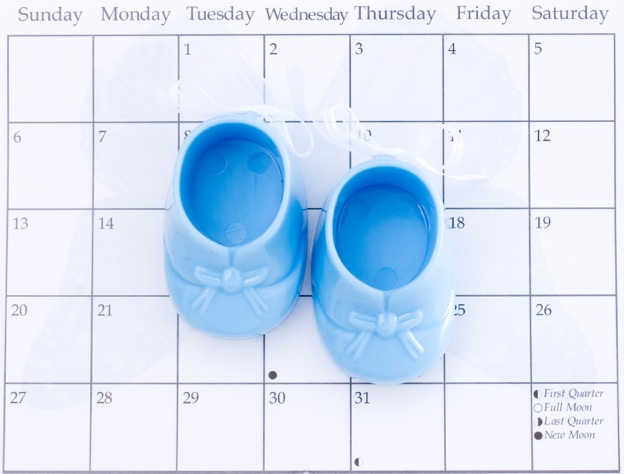SingaporeMotherhood | Pregnancy
July 2012
Creating Your Birth Plan

Becoming pregnant and giving birth to a baby are life-changing events in a woman’s life. For many a woman, her baby’s birth becomes one of her most precious memories.
It is no surprise then, that educators and birth professionals encourage expectant parents to take an active role in shaping their births by writing birth plans. If labour progresses as expected or if labour and birth turn out to be less-than-ideal, having a birth plan enables you to emerge feeling that you have taken responsibility for your birth decisions.
[banner][/banner]
What Is A Birth Plan?
A birth plan is a sheet communicating your concerns and wishes for the nurses, midwives and doctors caring for you in labour and birth.
It describes how you would like labour and birth to be managed, the kind of support you’d like, such as a doula, and your preferences for comfort measures and interventions.
It also includes your wishes if things do not go as expected, and for breastfeeding and postpartum care.
Why Write A Birth Plan?
You may feel that you don’t really know what to expect in labour. Even so, there is value in creating your birth preference sheet.
• When crafting your birth plan in pregnancy, you find out about options for labour and birth. This reflection and information gathering prepares you to make considered decisions in labour and birth. You also feel more confident as birth approaches!
• A birth plan is more than a checklist; it is a vehicle of discussion with your doctor. As you and your doctor go over the draft, you are able to discuss specific wishes; your doctor gains insight into your concerns and gives feedback.
Diann Bustamante, director of ParentLink, childbirth educator, doula and HypnoBirthing® practitioner, says, “The key to a good birth preference sheet is determining that both parents and maternity care providers are on the same page. If the parents want a home birth and their maternity care provider doesn’t attend home births, then it is an obvious mismatch. It might be slightly more ambiguous if the parents want to wait for labour to start naturally, and the maternity care provider is not comfortable going past 40 weeks without inducing labour. The birth preference sheet is a great communication tool for the reasons of both sides to be discussed so that the parents can make informed decisions.”
Mother to three boys, B. Chua had a Caesarean birth for her first baby and still wonders if her birth plan was only half-heartedly accepted by her doctor. For her later births, she chose a doctor who was more open to her plans; she received the care and support she hoped for and went on to have vaginal births.
• Your birth plan allows you to communicate with the labour ward staff, enabling them to support you in the way you want.
In labour, you would not want to be answering questions. Having a birth plan ensures that those around you know your preferences.
This is especially true if you have less common wishes for your birth such as allowing your baby to descend gently without prolonged periods of pushing or ‘cheerleader-style’ coaching from those caring for you in the crowning stage. Other requests may include your desire to give birth in an upright position or skin-to-skin contact with your baby immediately after a C-section.
How Do You Create A Birth Plan?
① Research & Reflect
Become informed about all available forms of comfort measures and pain relief. Find out about the benefits and drawbacks of each alternative. Read about routine procedures and when these are medically necessary. Take independent childbirth classes, learn new skills.
Use your newfound knowledge to work out your philosophy towards your birth. All the requests in your birth plan need to be consistent with the kind of birth you want.
For instance, if you would like minimal interventions, think about how this can be achieved and what you would need to do to reach this outcome.
② Draft
Write a draft.
③ Dialogue With Your Doctor
Discuss the draft with your doctor. During these discussions, you will learn how compatible your wishes are with your doctor’s and hospital’s practices. Stay flexible, but aware of your goals for your birth.
④ Your Final Birth Plan
Towards the end of your pregnancy, you will arrive at a final version, a product of your research, reflection, and dialogue with your doctor.
Jeanette L. Alexander, doula and mother of a five-year-old and a 19-month old, sums it up: “I wanted to have full control over the entire birthing experience. The process of putting a birth plan together served to walk me through the entire labour and birth with useful input from my caregivers. This really helped me visualise and articulate my birth preferences. It also gave them a clear idea of what I wanted during my labour and birth!”
Consider these dos and don’ts:
* Layout
Organise your plan as a chart or using bullet points. Use short paragraphs and clear sub-headings.
* Language & Choice of words
A long list of demands for your doctor and his staff may be frustrating for them. Opt for an easy-to-read style and use words that are neither passive (“if it is possible, could I have…”) nor aggressive (“do not perform unnecessary vaginal exams…”). Go for a friendly, respectful tone.
Diann Bustamante of Parentlink suggests that birth preferences be presented as requests rather than demands, and parents keep a positive tone about what they do want, not what they don’t want.
Keep a copy in your patient file, pass one to labour staff, and keep a copy handy for yourself.
Sample Birth Plan
Point-Form Birth Plan
• Introduction about you and your partner, your feelings, your background – state strong feelings for example, about having an unmedicated birth.
• Your goals, wishes and other concerns – mention any fears or past experiences.
• Your preferences for managing labour pain – think of your preferences as being on a scale, with one end being ‘feeling no discomfort at all’ and the other end being ‘no medical pain relief, only comfort measures such as using a birth ball’; a variation of this idea was first suggested by childbirth educator and doula trainer Penny Simkin.
• Interventions – when labour progresses normally, are interventions necessary for safety? What are your views on monitoring the baby/contractions, using drugs to speed up labour, intravenous fluids, having an episiotomy, vacuum or forceps birth or coached pushing as the baby emerges?
• Preferences for unexpected events – consider how you can still meet many of your goals for example, in a C-section or with kangaroo care.
• Postpartum care – mention rooming-in or dietary needs.
• Newborn care & breastfeeding – mention your wishes for skin-to-skin contact after birth, plans for newborn procedures and breastfeeding.
You may choose not to write a birth plan or defer birth decisions to your doctor. Even so, you already have some beliefs and expectations regarding your birth and writing your birth plan on paper is merely a way of communicating those goals to your birth team. The information-gathering, self-awareness and reflection you go through in creating your birth plan are all as vital to having a fulfilling birth as the birth plan itself!
All content from this article, including images, cannot be reproduced without credits or written permission from SingaporeMotherhood.
Follow us on Facebook, Instagram, and Telegram for the latest article and promotion updates.






